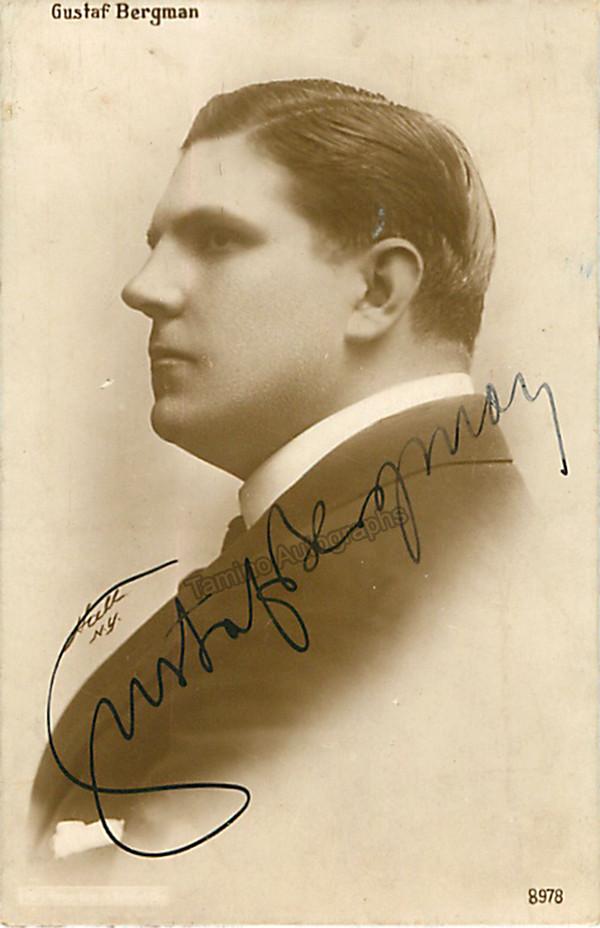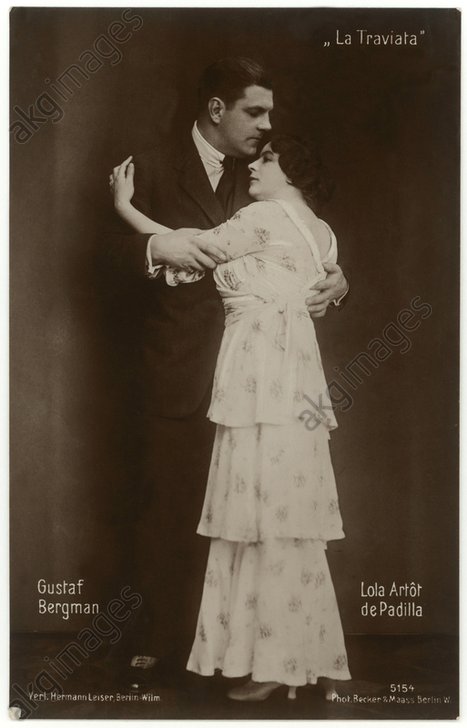Gustaf Bergman
3 October 1880 Stockholm – 5 June 1952 Hedemora
Bergman studied voice in Milano, and music theory with Engelbert Humperdinck in Berlin. He
had his first contract in Rostock 1905/06, where he was successful as Lohengrin, Erik and Siegfried, although he later sang
more lyrical parts like Belfiore (La finta giardiniera), Jeník, Léopold or Wilhelm Arndt (Der Ring des
Polykrates by Korngold). He spent his career in Germany, partly as a freelancer, partly as a member of the theaters of
Krefeld, Mannheim, Graz, and finally of the Berlin Hofoper (1915–18), where he already ventured into stage direction.
After Berlin, he gave up his tenor career, and worked exclusively in stage direction, first in the USA, then in Sweden, where
he was also a theater director (twice at the Stora Teatern in Göteborg, 1922–25 and 1935–37). From 1925 to
1929, he was first stage director at the Royal Opera Stockholm; he was considered the best Swedish stage director in opera at
his time. He produced the Swedish premieres of Pelléas et Mélisande (1926), Ariadne auf Naxos (1926), Un ballo
in maschera (1927) and Turandot (1927); particularly successful were his Stockholm productions of Fledermaus and Bettelstudent,
and his Göteborg productions of Tannhäuser and Tiefland.
From 1928, he was married to Swedish contralto Kerstin Thorborg. In the early 1930s, he also shot films.
Reference 1;
reference 2: Kutsch & Riemens
I wish to thank Christian Torrent for the pictures (bottom two).
|


